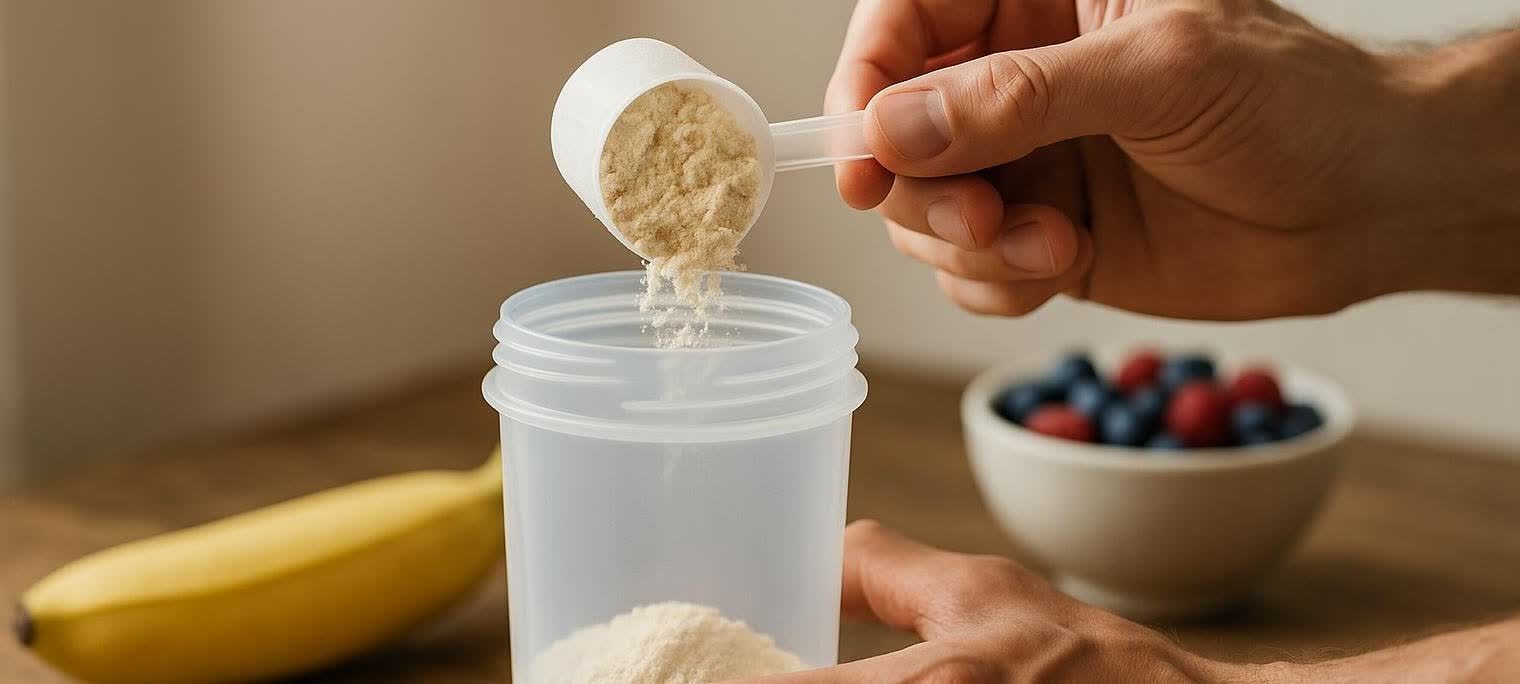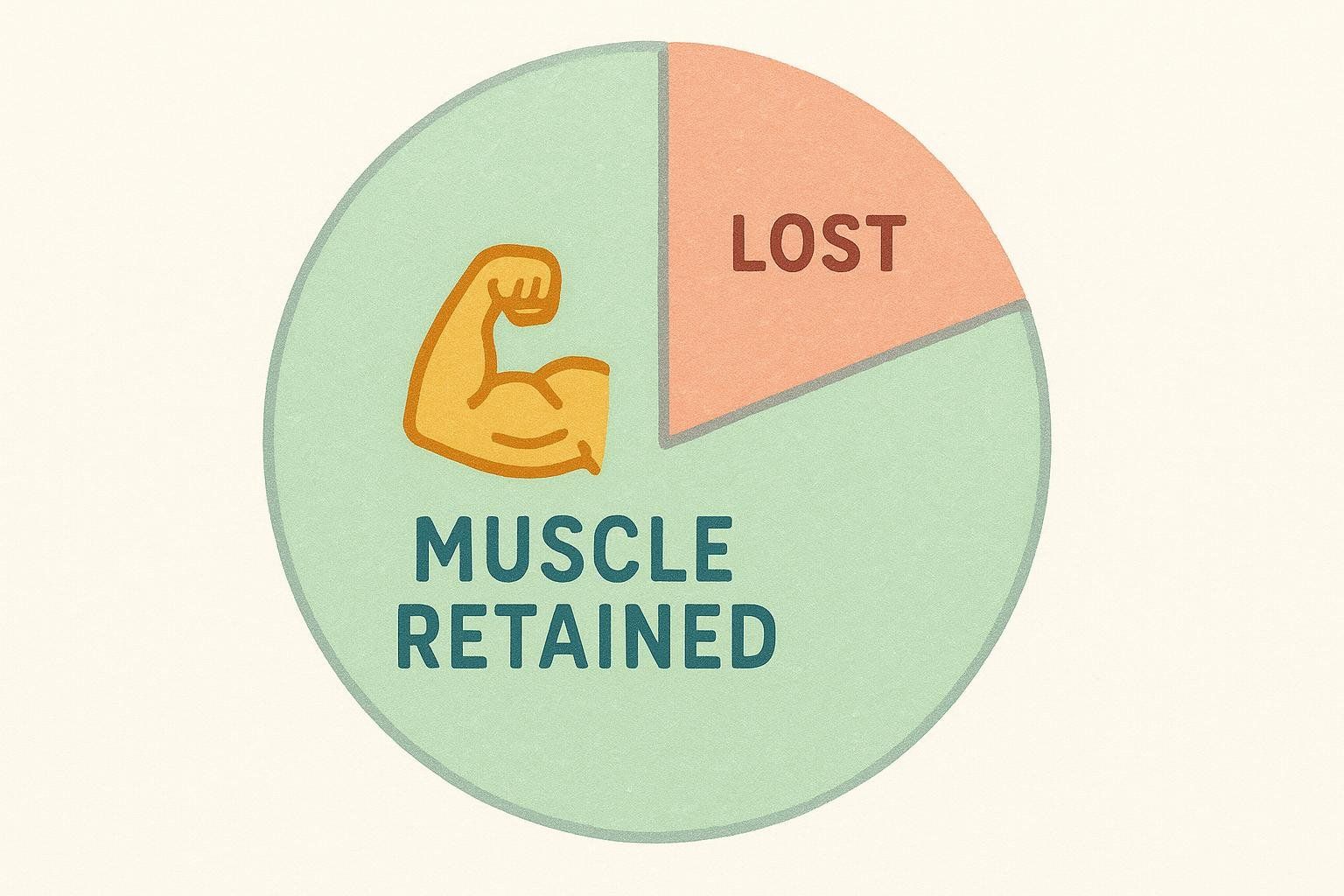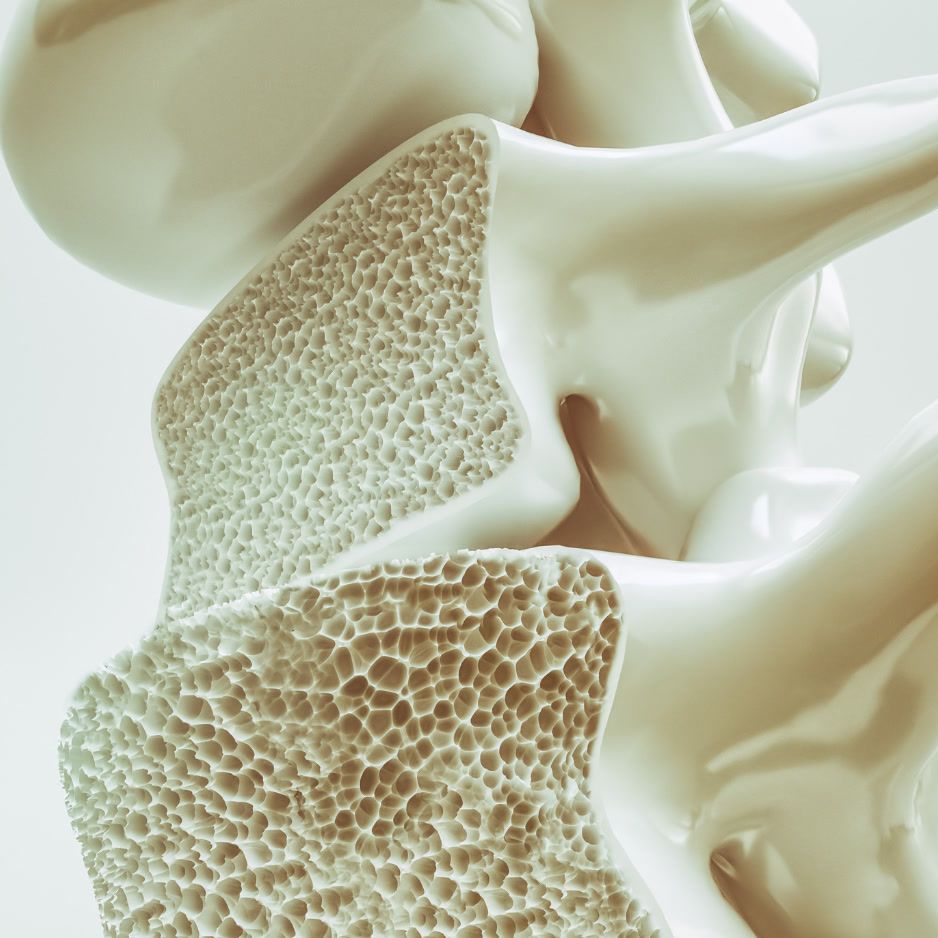Am I Losing Muscle? 7 Signs and Fixes

Am I Losing Muscle? 7 Clear Signs & Science-Backed Fixes
TL;DR – Sliding strength numbers, looser sleeves, or a sudden dip in resting metabolic rate are red flags. A DEXA scan confirms whether lean mass is actually disappearing – and a few nutrition and training tweaks can halt (and even reverse) the trend.
Muscle is essential for more than appearance; it keeps you moving, stabilizes joints, regulates blood-sugar, and drives resting calorie burn. So when clients ask, “Am I losing muscle?”, the concern isn’t vanity – it’s overall health and performance.
This guide breaks down:
- 7 evidence-based signs of muscle loss you can spot early.
- Simple at-home tests – plus the gold-standard body-composition scan – to confirm it.
- Proven nutrition, training, and lifestyle strategies to stop and reverse decline.
- Quick-answer FAQs about why muscle disappears and how much you typically lose on a diet.
Let’s dive in.
Why Muscle Loss Matters

Muscle atrophy (shrinking fibers) and sarcopenia (age-related muscle loss) are tied to:
- Higher risk of falls and fractures.
- Slower metabolism and easier fat gain.
- Reduced insulin sensitivity and higher type-2 diabetes risk.
- Lower bone density and frailty with age.
Clinicians at the Cleveland Clinic note that even a two-week break from training can measurably shrink muscle cross-sectional area.
Bottom line: guarding lean mass is a lifelong investment, whether you’re leaning out for summer or turning 60 and focused on functional strength.
7 Signs You’re Losing Muscle
| # | Red Flag | What You’ll Notice | Why It Happens |
|---|---|---|---|
| 1 | Strength numbers slide | Your 5-rep max deadlift drops 10–15 lb for no clear reason. | Reduced neural drive and lower rates of muscle-protein synthesis make fibers produce less force when they aren’t challenged or fueled. |
| 2 | Sleeves feel looser | Shirt arms or thighs aren’t as snug, even if the scale is stable. | Girth usually tracks muscle more than fat in trained areas. |
| 3 | Weight loss feels “soft” | You look smaller but not necessarily leaner. | Losing lean tissue raises body-fat percentage, blurring definition. |
| 4 | Resting Metabolic Rate (RMR) drops sharply | Smart scales or lab tests show fewer calories burned at rest. | Muscle is metabolically active – less of it lowers RMR. |
| 5 | Everyday tasks get harder | Carrying groceries or climbing stairs feels surprisingly taxing. | Functional strength drops alongside muscle mass. |
| 6 | Extended DOMS & recovery | Soreness lingers 4+ days after familiar workouts. | Chronic calorie or protein shortage keeps your body in a catabolic state, delaying repair. |
| 7 | DEXA shows lean-mass decline | Side-by-side scans reveal lower lean mass or higher visceral fat. | DEXA provides objective data, confirming tissue loss – not just scale weight shifts. |

Quick Self-Check
If several of these signs resonate, run the at-home tests below or schedule a scan.
How to Confirm Muscle Loss (DIY & Lab Options)
1. Performance Benchmarks
- Strength log – Track your 3–10 rep maxes monthly. A consistent drop (> 5 %) is a warning sign.
- Handgrip test – The 2019 EWGSOP2 consensus guidelines flag scores below 16 kg for women or 27 kg for men as probable sarcopenia.
- Chair-stand test – The Shirley Ryan AbilityLab notes that needing more than 15 seconds to complete five sit-to-stands is linked to greater fall risk and lower-body weakness.
2. Tape-Measure Tracking
Wrap a flexible tape around:
- Mid-upper arm (relaxed)
- Mid-thigh
- Calf (widest point)
Losses exceeding 1 cm over 4–6 weeks warrant attention.
3. Body Composition Scan
A DEXA scan quantifies fat mass, lean mass, bone density, and visceral fat in about 10 minutes, with test-retest error below 1 %. For data-driven athletes, it beats BIA scales or calipers hands-down.
Pro tip: Schedule a BodySpec DEXA scan every 3–4 months to spot trends early and fine-tune your program.
Common Reasons You’re Losing Muscle
- Aggressive calorie deficit – Diets that slash more than 25 % below maintenance burn lean tissue fast, as highlighted by nutrition researchers in The Conversation.
- Low protein intake – A 2018 meta-analysis on protein intake found that 1.6–2.2 g/kg of body weight is the optimal range for preserving muscle during a fat-loss phase; eating less than this blunts muscle-protein synthesis.
- Inactivity or immobilization – Desk work plus skipped workouts triggers a potent catabolic cascade.
- Aging & hormonal changes – Falling testosterone, estrogen, and growth hormone weaken anabolic signaling.
- Rapid weight-loss drugs or illness – Clinicians at UCLA Health warn that GLP-1 medications and certain diseases can accelerate lean-mass loss unless resistance training offsets it.

Stop (and Reverse) Muscle Loss: 5 Evidence-Backed Strategies
1. Prioritize Protein
| Goal | Daily Target |
|---|---|
| Fat-loss phase | 1.6–2.2 g/kg bw – Meta-analysis |
| Muscle gain or maintenance | 1.6–1.8 g/kg bw |
| Older adults (> 60) | 1.2–1.6 g/kg bw |
Spread intake across 3–5 meals with roughly 0.4 g/kg per sitting. For a deeper breakdown, read our guide on calculating your ideal protein intake.

2. Lift Heavy (and Smart)
- Commit to 2–4 total-body sessions per week.
- Keep some sets in the 4–6 rep zone to preserve fast-twitch fibers.
- Progressive overload: add 2–5 lb or 1 rep every week.
For detailed routines, see our guide, The Ultimate Guide to Building Muscle.
3. Don’t Skimp on Recovery
- Sleep 7–9 hours.
- Insert a deload week every 6–8 weeks.
- Consume 25–40 g protein sometime after training—the exact timing is flexible so long as you hit your daily total.

4. Manage Stress & Move More
Elevated cortisol is catabolic. Daily walks and mindfulness buffer stress—see how stress impacts fitness and weight loss for tactics.
5. Supplement Smarter
- Creatine monohydrate – 3–5 g/day sustains strength.
- Leucine-rich EAAs or whey – useful when appetite is low.
Special Considerations for GLP-1 Medication Users
GLP-1s blunt appetite, which can inadvertently slash protein below muscle-friendly thresholds.
Tips:
- Log meals to confirm you’re hitting at least 1.6 g/kg protein.
- Schedule strength workouts on higher-calorie days when energy is better.
- Use a whey shake if solid food volume feels tough.
- Book quarterly DEXA scans to confirm lean-mass retention.
For more guidance, see our GLP-1 protein guide.
Frequently Asked Questions
What are the symptoms of muscle wasting?
Clinical muscle wasting (atrophy) shows up as rapid, unexplained weight loss, pronounced limb shrinking, persistent weakness, fatigue during normal chores, and sometimes muscle twitching. After an injury or long illness, one limb may visibly look thinner than the other – a pattern flagged by Mount Sinai’s medical library. Early resistance exercises plus adequate protein halt further deterioration.
Why does it seem like I’m losing muscle?
Several factors can create the feeling of muscle loss even when your lean mass is stable. Common culprits include glycogen and water depletion (think low-carb diets) and less “pump” during deload weeks. True muscle loss is confirmed only when performance, measurements, and a scan all trend down together.
How much muscle is lost when losing weight?

Without lifting and high protein, roughly 20–30 % of total weight lost can come from lean mass, according to a 2017 review on body composition changes during dieting. Pair a moderate (~ 500 kcal) deficit with 1.6–2.2 g/kg protein and 3–4 weekly lifting sessions, and that number can drop into single digits—or you may even gain muscle while dieting.
The Takeaway
If you suspect muscle loss, don’t panic – measure, confirm, act. Track strength, wrap a tape around key limbs, and schedule a DEXA scan for data you can trust. Then tighten protein, train with intent, and prioritize recovery.
Ready for definitive answers? Book your BodySpec DEXA scan today and turn anxiety into actionable metrics.


